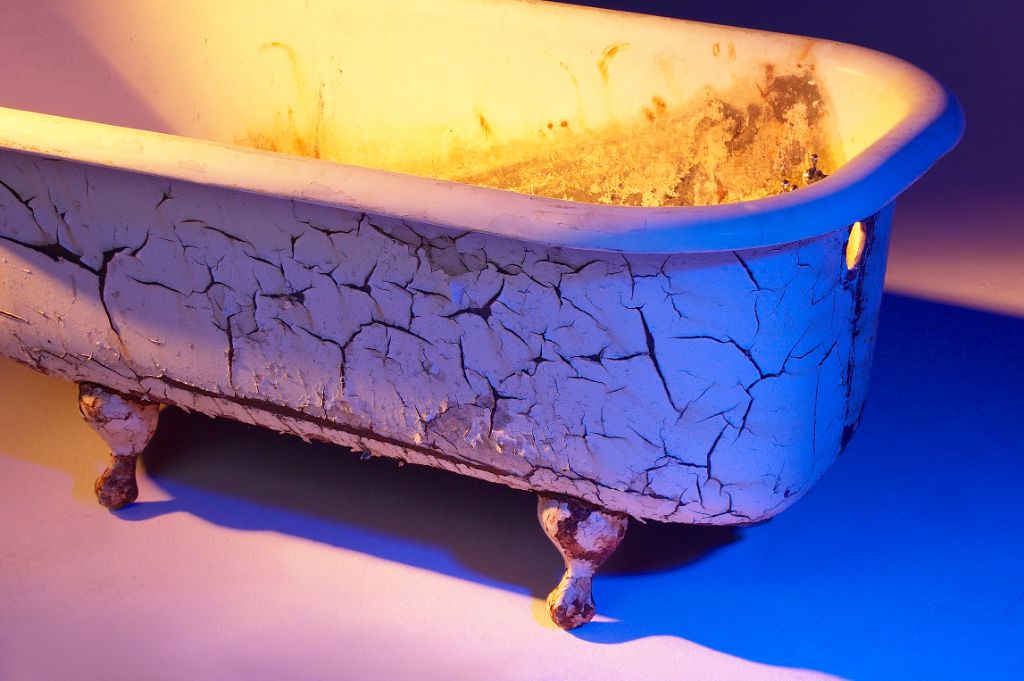Cutting a cast iron tub can be a challenging task. Cast iron is extremely durable, but also very difficult to cut through. Choosing the right tools is critical to get a clean cut without damaging the tub or yourself. In this article, we’ll discuss the characteristics of cast iron, the main methods for cutting it, and the specialized tools you’ll need to safely and effectively cut a cast iron bathtub.
Page Contents
The Unique Properties of Cast Iron
Cast iron has been used for bathtubs and other household items for over a century because of its unparalleled durability and heat retention. Here are some key traits that make cast iron unique:
- Extremely strong – Cast iron has a very high compressive strength, making it resistant to forces that could cause dents or cracks.
- Hard yet brittle – While very hard, cast iron is also quite brittle. It can crack if subjected to sharp impacts.
- Difficult to cut – The hardness of cast iron makes it challenging to cut through using regular saws or cutters.
- Prone to chipping – If not cut properly, the edges of cast iron will chip and fray instead of cutting cleanly.
- Heavy – Cast iron is very dense and extremely heavy. A standard tub can weigh over 100 pounds.
These unique properties require specific tools and techniques to cut cast iron successfully. Improper cutting can damage the tub, create safety hazards from sharp edges, or take an extremely long time.
Cutting Methods for Cast Iron Tubs
There are three main options for cutting cast iron tubs:
- Abrasive cutting – Using special abrasive discs or blades on an angle grinder or circular saw.
- Plasma cutting – Cutting through the cast iron with a superheated plasma arc.
- Oxy-fuel cutting – Using a torch to heat the cast iron to its ignition temperature before cutting.
Each method has its own advantages and disadvantages:
| Cutting Method | Pros | Cons |
|---|---|---|
| Abrasive Cutting |
|
|
| Plasma Cutting |
|
|
| Oxy-Fuel Cutting |
|
|
For DIY cast iron tub cutting, abrasive cutting with a specialty blade is usually the most accessible and effective method.
Abrasive Cutting Tools
Abrasive cutting uses a spinning disc or blade that is coated in an abrasive material like aluminum oxide or silicon carbide. As the blade spins, these gritty particles grind through the cast iron leaving a narrow, clean cut. Here are the abrasive cutting tools required:
Angle Grinder

An angle grinder is essential for cutting cast iron tubs. A 4.5″ to 5″ angle grinder provides the best balance of cutting power and control. Make sure to select a model with a 10 to 15 amp motor and high rpms for the best cutting performance. Protective eyewear and gloves are mandatory when using an angle grinder.
Diamond Blades

Standard abrasive discs will wear out quickly and fail to cut effectively. Use a diamond grit blade specifically designed for cutting cast iron and other ferrous metals. Look for “turbo” style diamond blades in 4.5″ or 5″ size that are continuous rim instead of segmented. The uninterrupted diamond edge provides a smoother cut.
Cutting Fluid

A cutting fluid is highly recommended when abrasively cutting cast iron. The fluid helps cool the blade and cast iron while flushing away metal particulate. Dedicated cast iron cutting fluid will extend blade life dramatically and may prevent the cast iron from overheating and warping.
Cutting Technique
With the right tools on hand, proper technique is also crucial for a clean cast iron cut. Follow these steps:
- Outline the cut with a permanent marker.
- Set up the tub so the cutting area is fully supported.
- Wear eye protection, gloves, and a respirator mask.
- Apply cast iron cutting fluid along the cut line.
- Make several light passes along the cut rather than one heavy cut.
- Keep the blade moving and avoid dwelling in one spot.
- Let the blade do the work, don’t apply excessive pressure.
- Stay alert and release the trigger if the blade begins to bind.
- Clean up any burrs with a file if needed.
Rushing the cut and applying too much pressure are common mistakes that will wear down the blade faster. Take your time and let the specialized cast iron blade do its job. Cooling and lubricating with cutting fluid makes a significant difference as well.
Safety Tips
Cutting cast iron has inherent hazards, including sharp burrs, metal shards in the eyes, sparks, and more. Keep these safety tips in mind:
- Use eye protection, heavy gloves, closed toe shoes, long pants, and a particle mask.
- Avoid loose clothing and tie back long hair.
- Only cut cast iron in a well-ventilated area.
- Support the cut area to prevent cracking once cut.
- Let the tool come to a full stop before setting it down.
- Unplug tools before changing the blade or disc.
- Keep a fire extinguisher and first aid kit nearby.
Rushing through the job can lead to injuries or accidents. Take your time and prioritize safety with each step.
Conclusion
Cutting a cast iron bathtub is a challenging DIY project but certainly achievable with specialized blades, the right technique, and a focus on safety. An angle grinder with a diamond grit cast iron blade allows you to make precise cuts without overheating or damaging the tub. Meanwhile, cutting fluid improves the cut quality and reduces wear on the blade. With skill and patience using these abrasive cutting tools, you can achieve a successful cast iron tub cut without the need to hire a professional.
